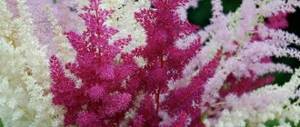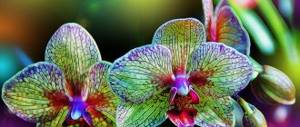Japanese spirea: species diversity
Golden Princess
Dwarf species. The height of the bush does not exceed half a meter. Golden Princess has beautiful pointed yellowish leaves and delicate pink petals of inflorescences. The leaves change color seasonally, but their shade always remains soft and pleasing to the eye.
Spiraea japonica varieties Golden Princess
Little Princess
The appearance of this type of Japanese spirea fully corresponds to its name. The height of the bushes is up to 0.8 meters. The crown is compact and has a round configuration. During the flowering period, the plant is covered with lovely pink flowers. The ellipsoidal leaves are dark green in color. Little Princesses make luxurious hedges. This type of Japanese spirea is considered the most decorative. Even if planted separately, it will not go unnoticed. It is destined to be the highlight of any landscape composition, and it does not matter in what capacity the species will be present there.
Spiraea japonica variety Little Princess
Goldflame
This is the fastest growing variety of Japanese spirea. The bushes are powerful, reaching a meter in height. In spring, the plant is covered with bright orange-red foliage. The color of the crown changes throughout the season, becoming bright yellow during flowering and changing to coppery orange in the fall. Gold Flame thrives in urban environments, so it can often be found in parks.
Bright variety of Japanese spirea Goldflame
Crispa
An elegant and incredibly beautiful plant. The low-growing bushes have a spherical crown formed from wavy, toothed leaves, and are distinguished by a pinkish-purple hue of flower petals. Crispa is good in borders and on the slopes of rock gardens.
Type of Japanese spirea Crispa spherical in shape
Spiraea Shirobana
This species is also called a chameleon plant. The reason for this is the wide range of colors of discarded inflorescences. At the same time, buds from light pink to deep red shades can bloom on the bush. Spiraea Shirobana belongs to the group of medium-sized ones. The height of its bushes is about 80 centimeters.
Spiraea japonica “Shirobana”
Spiraea japonica little princess
Spiraea japonica Little Princess (LITTLE PRINCESS) is a compact ornamental shrub with abundant flowering. Its small height, dark green leaves and pink flowers have made this unpretentious plant a popular decoration for gardens and plots.
Description
Japanese Princess bushes have an unusual spherical shape and are dense. This is a dwarf variety with a long flowering period, height 0.8–1 m with an annual growth of 10 cm in height and 15 cm in width (see photo).
Crown
The diameter of the round or cushion-shaped dense crown is 0.8–1.2 m, the bush is multi-stemmed, with many straight shoots. Young shoots are pubescent, then the bark acquires a reddish tint. The leaves are lanceolate, pointed, small, alternately arranged. In summer and spring the color is dark green, changing to a yellow-ocher hue with the arrival of autumn.
Small flowers are pink-red, 0.5 cm in size. Collected in corymbose inflorescences with a diameter of 2–3 cm at the ends of the branches. Flowering begins in June, lasting about 45 days. Pruning dried inflorescences prolongs the time; the shrub is able to bloom all summer, including August.
Peculiarities
The Japanese spirea species has many varieties, differing in the shape of the crown and height of the bush, shades of foliage and flowers. A few common crops:
- Shirobana - the variety is distinguished by a variety of shades of flowers - from white to bright red, it depends on the lighting. Not everyone likes a chaotically formed crown; it gives the bushes an untidy appearance.
- Golden Princess is a small shrub that grows up to 50-60 cm, with a crown diameter of more than 1 m. The unusually colored leaves acquire bright yellow shades in spring, lighten in summer, and turn orange in autumn. Common as a ground cover crop.
- Albiflora is a variety with white flowers that emit a rich, dense aroma. Low bushes reach 60 cm in height; drying inflorescences must be removed, as they spoil the overall impression with an ugly brown tint.
Spiraea of this species was imported from Japan and is cultivated in China. High adaptability has helped it become widespread in our country in almost all regions, including the arid and harsh northern regions.
Application
Spiraea Little Princess looks good in the landscape all year round, regardless of the season. It can be shaped and trimmed, but in this case it will not please you with flowering, since monthly pruning removes all the buds and flowers. The variety is recommended for landscaping courtyards, school playgrounds, sanatoriums and hospitals.
A single bush will decorate a flowerbed, since it does not produce many basal shoots and does not entangle neighboring plants with its roots. Group plantings look great as a hedge, lawn border, or slope cover. In landscape design it is used for lining groups of trees and bushes, flower beds, and edges.
Landing
Little Princess is not a demanding crop, but prefers fertile, loose, moist soils with good drainage. Loamy, neutral or slightly acidic soils are suitable.
Selection and preparation of a site
The bush develops worse and does not bloom profusely if you choose a heavily shaded area with depleted soil. Moderately tolerates drought, adapts well to urban gas pollution. It is advisable that the plantings be protected from drafts by outbuildings, fences, and other shrubs, especially in regions with harsh winters.
For planting, choose an area that receives sunlight for at least 4 hours a day. The pit is prepared in advance, two days in advance. For cover plantings, a frequency of 6 plants per 1 square meter is allowed. m. Seedlings are purchased in the spring, before the leaves bloom, in April. In a cool room they can be stored for several days without compromising quality.
Saplings
They buy plants that are strong, without traces of parasites and rot, diseased and dry shoots. The exposed root system is carefully inspected, roots that are too long and damaged are removed. The roots are soaked in water for several hours, the containers are placed entirely in the liquid, and care is taken not to damage the earthen ball.
Long shoots are trimmed and the exposed root system is sprayed with a root formation stimulator. The shrub is very tenacious, so do not despair, even if you come across a seedling with a dried out earthen lump. In this case, before the planting procedure itself, several small vertical cuts are made on the roots, this causes their increased growth.
Care
An unpretentious culture is extremely simple to maintain. Timely watering and pruning, disease prevention are the main requirements for abundant flowering and good development of spirea.
Top dressing
If you add organic matter to the soil when planting, the plant does not need feeding in the first year of its life. In the future, it is enough to add nitrogen fertilizer to the soil near the bushes in early spring, and compost in the fall. The shrub responds well to fertilization with mullein infusion (1 part manure to 1 part water, kept for 7-10 days). Add 10 g of superphosphate to 10 liters of solution (1:10) and pour it under the root.
Watering
The plant's shallow root system suffers during hot and dry seasons. At this time, water more often, weekly. In normal weather, 2 times a month 15 liters of water per bush is enough. On hot days, irrigation will help the spirea to bloom profusely and not lose its decorative appearance.
Loosening
The soil is loosened after watering and rain, when the surface becomes crusty. The digging depth is small - 5-6 cm. The tree trunk space is mulched with a layer of peat up to 7 cm high. In the warm season, weeds and debris are removed.
Diseases
Spiraea Japanese Little Princess is practically not susceptible to disease. The appearance of the bush will be spoiled by an attack by pests, which are most often active in hot, dry weather.
- The leaf roller damages young leaves in late spring.
- Aphids suck juices from young shoots.
- Spider mite - entwines the plant with a web, causing branches to dry out and die.
Systemic treatments with folk remedies and chemicals prevent parasite attacks.
- karbofos, solution 0.3%;
- phosphamide – 0.2%;
- acrex – 0.2%;
- pyrimor – 0.1%;
- tobacco infusion - 50 g of dry leaves, pour 1 liter of boiling water, leave for 3 days;
- soap solution - 25 g of laundry soap per 1 liter of water, add a few drops of kerosene.
Pruning, preparing for winter
Annual spring pruning stimulates the growth of young shoots and the splendor of flowering. The branches are shortened, leaving 15-20 cm above the ground. Remove dry and damaged shoots.
Summer formation of the bush involves pruning every month. The plant looks great even without flowers - the bottom of the trunks is not exposed, the dense crown of different shades gives the landscape a unique look. On varieties with yellow foliage, reverse shoots with green leaves are completely removed.
The frost-resistant variety does not require shelter for the winter. Only in northern regions with severe cold do they cover the base of the bush with straw, wrap it in cloth, and cover it with spruce branches to a height of 15-20 cm. In the first year of life, the seedling is protected from frost with covering material, and a wooden box is placed on top. Frozen shoots are pruned in the spring; they are easily restored and do not affect the appearance or decorative effect.
How to plant Japanese spirea correctly
“Spirea is a picky plant”
Since spirea is a flowering shrub, the place for its life activity should be sufficiently illuminated. If there are no such open areas, then the plant can be planted in the partial shade of tree crowns. She will also feel quite comfortable there. Soil fertility is not particularly important, and this fact makes the plant a universal material for landscaping. When planting spirea, you need to take into account the varietal characteristics of the plants.
Japanese spirea is recommended to be planted in well-lit areas
For example, dwarf species prefer rocky soils, so they will feel comfortable in rock gardens.
Dwarf spirea will be a good decoration for a rock garden
Spiraea is a picky plant. She easily takes root in any conditions. Bushes are planted in spring and autumn, preferably in rainy weather or at least on a cloudy day. At the site of future growth, a hole is dug, the size of which should be proportional to the size of the roots. If there is at least a small layer of fertile soil on the site, then fertilizers do not need to be added. Provided that you need to plant a group of seedlings at once, you should take a garden drill to dig holes. Bushes planted as hedges should be placed in a checkerboard pattern.
Planting Japanese spirea in the ground
The stepping distance in a row is up to half a meter, the space between rows is from half a meter to seventy centimeters. Tall plants with a spreading crown can be planted at meter intervals.
Japanese spirea has a wide spreading crown
If the planting holes are located in a low-lying area, they must be provided with drainage. On the drainage pad you can use:
1. Broken brick.
2. Sand.
3. Crushed stone.
The landing pit must have strictly vertical walls. Approximate parameters of depth and width are 40 by 50 cm. the prepared hole is left to ventilate for several days. Immediately before planting the bush in the hole, a little nutrient soil mixture is poured onto the drainage layer, which should contain:
1. Sod or leaf soil (2 parts).
2. Sand (1 part).
3. Peat (1 part).
Planting pit for Japanese spirea
If the soil is not highly fertile, then when planting it is worth adding fertilizer with a complex composition to the hole. Long-lasting AVA complexes are best suited. One tablespoon will be enough to ensure uniform feeding of the bushes over the next three years. Chlorine-free granules contain the entire set of macro and microelements, except nitrogen, so it is added to the soil separately. The latter is found in mineral complexes containing urea and in organic matter (compost, which is applied in a 5-7 centimeter layer).
When planting Japanese spirea, it is recommended to apply complex fertilizers.
Before the seedling goes into the prepared hole, you need to inspect its roots. Weak and damaged shoots are removed, and shoots that are too long are shortened. Similar actions are performed with the vegetative part of the bush. It can be safely shortened by a full third of the length. Such pruning will have a particularly good effect on seedlings with a dry root system.
Scheme for pruning roots and stems before planting
Before planting, it is a good idea to place such a seedling in clean water for at least a couple of hours. The soil around the planting material is compacted. Considering the fact that the roots of Japanese spirea have a superficial location, loosening and mulching of tree trunk circles is useful for them, for which you can use:
1. Peat.
2. Seed husks.
3. Compost.
4. Sawdust.
Mulching will retain moisture and protect the root system from freezing.
Mulching Japanese spirea with peat and bark
Japanese spirea care
Spiraea is a plant from the category of unpretentious, so it will not make any excessive demands on its content. Moderate watering will suit her. During drought, the bushes will be content with a couple of buckets of water poured under them once every two weeks. Spiraea will need abundant watering only after pruning.
Japanese spirea does not need frequent watering
What you need to keep an eye on is the condition of the tree trunk circle. The soil in this area should be loose and free of weeds. A good way to prevent drying out, clogging and overgrowing with grass is to mulch with compost, bark or peat.
If you want your spirea to bloom long and luxuriantly, pamper the plant with liquid fertilizers. This can be done twice per season. Fertilizer should be applied the first time immediately after spring pruning, and the second time in mid-summer. It is good to use mullein infusion with the addition of superphosphate. For 10 liters of infusion add 10 grams of fertilizer. Under each bush you need to add 3 liters of the prepared mixture
Spireas are fed twice a season.
We have already talked about the hardiness of spirea, however, in a snowless and extremely cold winter, you will still have to take additional care of it and cover the roots of the bushes with a layer of foliage twenty centimeters thick.
Covering spirea with foliage for the winter
Experienced gardeners have compiled a real calendar for caring for these magnificent plants, which indicates when and what needs to be done.
Planting and caring for spirea Little Princess
The plant itself is quite unpretentious, so caring for it is easy. Perennials, with rare exceptions, are quite tenacious plants. To bring them not only to death, but even to a bad appearance, you should seriously “try.”
However, even when growing them, one should not forget about the basic features of caring for bushes of this type, especially those with dense foliage.
Important! Considering the low growth rate of spirea in the first years, many gardeners begin to use various growth stimulants and intensive fertilizing to “accelerate” the process.
This should not be done, since such actions will lead to a significant increase in a large amount of green mass, and the first flowering may not occur in the third year, but much later.
Next, the issues of planting and caring for the Japanese Little Princess spirea are discussed in more detail.
Preparation of planting material and site
Little Princess spirea is planted in the spring, starting in mid-April or early May. The selection of seedlings is made according to the following method: it is necessary to take only those specimens that have a bare stem with buds, preferably without leaves. The roots of the seedlings should be moist, without rot or dried areas. Good quality seedlings have noticeable flexibility.
Preliminary preparation of seedlings consists of shortening too long roots and removing the ends of shoots located above 3-4 cm relative to the last bud on them. Immediately before planting, the seedlings are soaked in liquid for a day and then washed with running water.
A sunny site for spirea is preferable, but this is not critical. The plant tolerates partial shade well. The root system is located close to the surface, so the groundwater level at the planting site is not critical.
The soil on the site can be anything, even slightly rocky, but Japanese spirea Little Princess grows best in moist and loose soils of weak acidity. The ideal soil is the so-called “leaf soil”.
Planting spirea Little Princess
To plant the plant, dig a hole with steep walls. The volume of the hole should be approximately 3-4 times greater than the volume limited by the root system. The hole must be dug 2-3 days before planting and it must simply “stand” open all this time.
Drainage is laid at its bottom in one layer of broken brick or expanded clay. The soil for planting can be used as follows:
- 4 parts leaf soil;
- 1 part peat;
- 1 part river sand.
Planting is done on a cloudy or rainy day, with the plant placed in a hole and sprinkled to the level of the root collar. After which the soil is compacted and watered abundantly.
Planting is completed by mulching the soil to a diameter of 30 cm from the center of the bush using peat.
Watering and fertilizing
The plant needs abundant watering only during transplantation and in the first years of life. Plants older than 2-3 years only need to lightly moisten the soil once a week. Naturally, during periods of drought, watering should be more abundant.
Important! You cannot “flood” the plant.
The root system, located close to the soil surface, can quickly begin to rot with heavy watering.
Feeding is done 2 times per season. The first is carried out after spring sanitary pruning; it includes mineral fertilizers, standard for ornamental perennials.
The second is done during the flowering period; it includes the use of organic fertilizers (for example, mullein in a concentration of 1 to 10).
Pruning spirea Little Princess in autumn
Caring for the Little Princess spirea involves pruning it, usually done at the beginning of the season. This is a standard procedure consisting of sanitary pruning and removal of too old shoots that interfere with the active growth of the bush.
In autumn, only pruning of the plant’s fruits is done, since they spoil its appearance and take away additional resources from it. This pruning is carried out in July-September as the fruits appear.
More mature bushes, older than 10-15 years, are recommended to be pruned every 4-5 years to a height of 20-50 cm relative to the soil level. In this case, 3-4 buds should be left on them. If after such a procedure the bush does not grow abundantly within 1-2 seasons, it is replaced.
Preparing for winter
In temperate climates, Little Princess spirea does not need to be prepared for winter. If harsh winters are ahead, it is enough to cover the bushes in the fall with a thick (up to 30-50 cm) layer of fallen leaves.
Calendar of activities for breeding spirea and caring for it
March, April
Purchase of material and planting
If you want to have a hedge of spirea bushes on your site or simply beautiful landscape compositions with its participation, in the month of March you already need to puzzle over the question and start looking for high-quality planting material. First of all, you will need to contact a reputable nursery and inquire about the availability of the required varieties of Japanese spirea. To save money, you can buy seedlings with an open root part. To do this, the required number of bushes is reserved, a deposit is paid and the digging time is agreed upon.
Japanese spirea seedlings
You will plant spirea in open ground no earlier than in April. You can begin the procedure as soon as the soil dries and you can walk on its surface without falling into the mud. Purchased seedlings can be stored for about a week before planting; the main thing is to place them in a shady place, immersing the roots in buckets or placing the bushes in boxes lined with film. Spiraea is a very tenacious plant, so it tolerates changes of “place of residence” well. It can be replanted at almost any time during active life.
Japanese spirea seedlings are planted in April
Trimming
Spring is a period of sanitary and rejuvenating pruning of spirea. Your task is to cut out dry and damaged branches so as not to disturb the symmetry of the bush. In plants that have crossed the 4-year mark, the oldest shoots are cut to the ground.
Pruning spirea to form a bush
Reproduction by division
Cool weather is an excellent time to obtain additional planting material. In the spring, you can dig up young spirea shoots and divide the bush into several parts.
Dividing a Japanese spirea bush
Reproduction by layering
You can go the other way and propagate Japanese spirea by layering. To do this, annual shoots must be bent and placed in grooves prepared in advance in the ground. In order for the branch to lie as intended, it is pinned along its entire length and sprinkled with a layer of soil. Over the coming season, you will get several new bushes from it at once.
The principle of propagation of a bush by layering
May June
Purchase and planting of seedlings
In May, active trade in spirea seedlings in containers begins. They can be planted on the site throughout the entire season, however, it is better not to hesitate when purchasing the varieties you like, since the most attractive subspecies are sold out very quickly.
Spiraea seedlings in containers
Don’t be upset if you suddenly come across a “exhausted” seedling, with roots “cemented” in a dry earthen coma. Spiraea are very stress-resistant and the bush can really be brought back to life. It's done like this. A few hours before the intended planting, the root part is immersed in water. After time, the bush is removed and several vertical cuts are made along the side of the coma, deliberately trying to slightly damage the roots. This technique will stimulate their growth and development. After the procedure, the lump is dusted with root and the seedling is sent into the ground.
July
Stimulation time
If you want to extend the period of abundant flowering, you need to take pruners and cut off the tops of already faded shoots.
Trimming spent blooms will prolong flowering
We fight reverse shoots
The yellow-leaved species of spirea Goldflame and Golden Princess often produce shoots with standard green foliage. They should be cut down to the ground immediately after discovery.
Aug. Sept
Re-trimming
It is carried out after the bush has completed flowering. The ends of shoots that have lost color are removed. It is more convenient to do this with garden shears rather than with pruning shears. This way things will move much faster. Timely pruning will prevent self-seeding. It will allow you to form the crown of the bush more compactly, and will also save you from contemplating dried fruit, although in winter they will be a real decoration of the landscape. At this point, decide for yourself how justified pruning or preserving the fruit is. The shoots are shortened to the first large buds.
It is very important to prune spirea in a timely manner.
When rejuvenating pruning, you should not be afraid of cutting off something unnecessary. Radical pruning is the key to the birth of new strong young shoots. There is a risk of missing it. Without this procedure, old shoots will deform the crown of the bush, bending the branches to the ground, and the tops of the shoots will dry out. Not only will aesthetics be lost, but the plant may even disappear.
October
Sowing time
During this month, Japanese spirea seeds are prepared, which will be sown before winter.
Preparation of Japanese spirea seeds
Spiraea Little Princess: description, planting and care, photos in landscape design
Spiraea Little Princess is one of the popular plants used in landscape design. The species is believed to be Japanese, as reflected in its name, but its exact origin is unknown. The plant is very decorative: it has thick leaves and inflorescences; The color of the leaves lasts until the end of October.
Spiraea is unpretentious in care, tolerates drought well, and can grow in both sun and partial shade. This article provides a photo and description of the Little Princess spirea and how to use it in landscape design.
Description of Spiraea Little Princess
The plant is a typical representative of deciduous ornamental plants of the Rosaceae family. The name of the species comes from the Greek word “spiral”, the shape of which is the shoots and inflorescences of spirea.
The height of the Little Princess spirea ranges from 15 cm to 60 cm, rare specimens reach a height of 120 cm. This perennial plant (life expectancy is 25-30 years) has a very low growth rate, no more than 10-15 cm per season, especially in first years of life.
https://www.youtube.com/watch?v=s02O0b8t5ro
The shrub has a shallow fibrous root system. Its leaves are decorative: during the flowering period their color is emerald green, and by the beginning of autumn they change color to orange-red. The leaves themselves are alternate, with short stalks. Their shape is lanceolate, with small teeth along the edges. The size of the leaves can reach up to 8 cm, but most of them are no more than 3.5 cm in length. The crown of spirea is round and dense.
Numerous flowers of Little Princess spirea are collected in close corymbose inflorescences. The buds themselves are small and located exclusively at the ends of the branches. The color is predominantly purple-pink.
The flowering period is from June to September with the constant formation of new flowers. After flowering ends, fruits appear at the ends of the branches, the appearance of which is not very aesthetically pleasing. They are cut off so that they do not spoil the decorative appearance of the plant, which the beautiful spirea leaves produce in the autumn. Japanese spirea Little Princess blooms starting from the third year of life.
Spiraea Little Princess in landscape design
Since all periods of active life of the Little Princess spirea during the summer season are accompanied by the bright colors of flowers and leaves, it is widely used in landscape design.
What are plants afraid of?
In general, spirea rarely gets sick, but it is not immune from pest attacks, like any other green space. The most actively attacked bushes are:
1. Aphids.
2. Spider mite.
3. Leaf roller.
The latter appears in May. Its caterpillars are so voracious that they can destroy up to 60% of the crown, gnawing out succulent leaves along with pedicels. You can fight the leaf roller with the drug “Primor” in 0.1% concentration. Its use in 95% of cases helps get rid of pests in one spraying.
Leaf roller on Japanese spirea leaves
The most dangerous enemy of spirea is the spider mite. Its appearance is indicated by a light cobweb in the crown and holes in the inflorescences. The leaves of the affected plant will dry out and fall off for no reason. The parasite is most active during the dry period. You can effectively fight spider mites with: 0.15% phosphamide solution, 0.2% acrex solution or good old karbofos in 0.3% concentration.
Spiraea japonica affected by spider mites
Preventive measures to prevent pest attacks include regular loosening of the soil, proper watering, and timely fertilizing.
Spiraea Little Princess
Japanese spirea Little Princess (Spiraea japonica Little Princess) is an ornamental plant belonging to the Pink family. This bush is also called “Japanese”, since it was brought from the land of the rising sun. During the flowering period of the crop, it pleases the eye with pleasant soft pink inflorescences, which look royal in contrast with the green foliage.
Did you know? In Rus', spirea rods were used as whips.
The biological description of the shrub includes the following points:
- Japanese spirea is classified as a perennial plant in which the growth process takes quite a long time;
- the culture is small in size - only 60 cm, although it grows in diameter within 1.2 m;
- The bush usually blooms at the beginning of summer and continues until September, but only in the third year of its growth;
- with proper care, the lifespan of the plant is 25–30 years;
- In summer, spirea leaves are bright green, and in autumn they are orange with a red tint.
Usually the culture is used to decorate flower beds, ponds, and as a border plant. It looks great in combination with conifers and other flowering plants.
Who is spirea “friends” with?
“The use of Japanese spirea with unique decorative foliage will make decorative compositions attractive until late autumn”
Spireas in bloom are unique. From their bushes, blooming at different periods, you can create real landscape paintings. The use of Japanese spirea with unique decorative foliage will make decorative compositions attractive until late autumn. Its large-scale group plantings look very impressive in combination with lilac and mock orange bushes, lined with primroses, border annuals, bulbous lilies of the valley, and astilbes. The decorative effect of such a composition is guaranteed from early spring until the last warm days.
Combination of spirea and sulfur
In the tree trunk circles of a lonely spirea, carpets woven from ground cover perennials would be appropriate:
1. Shiny dark green periwinkle.
2. Shady saxifrage, mottled with yellow colors.
3. Variegated lungwort.
4. Painted yassy.
5. Mouse gray cerastum.
A good solution would be to supplement the composition with spring soloists - bulbous and small-bulbous flowers such as multi-colored daffodils, tulips, hazel grouse, blue scylla streams, lilac chiondoxa clearings, lilac-pink corydalis and piercing blue muscari circles.
Flower garden of tulips and golden princess spirea.
A win-win move would be to plant perennial violas and violets in front of the spirea bush, blooming until the snow.
General information
Description and features of Little Princess
The size of Little Princess increases slowly; it can be up to 0.6 m in height. The prefix “Little” in the name indicates a dwarf variety of this plant. Although spirea does not grow in height, its volume can be about 1.2 meters.
The color of spirea leaves changes throughout the season. During the flowering period they are rich green, and by autumn they acquire orange and reddish colors.
The flowering of the shrub is quite long, and lasts from the very beginning of summer until September. Spiraea Little Princesses begin to bloom three years after planting. In total, the life cycle reaches 30 years if all growing rules are followed.
After flowering, fruits form on the bushes, which are best cut off; they spoil the appearance of the ornamental shrub.
There are many varieties of spirea; they are planted together, which makes the planting even more beautiful.
- Golden Princess - This variety is grown as a soil cover; in the summer the leaves change from bright yellow to lighter, and in the fall they turn orange.
- Shirobana blooms very profusely, the flowers can be either white or red, it depends on the light level of the bush.
- Albiflora has a strong aroma during flowering. There are so many flower stalks on the bush that when they dry, it is better to remove them and not spoil the appearance of the spirea.











